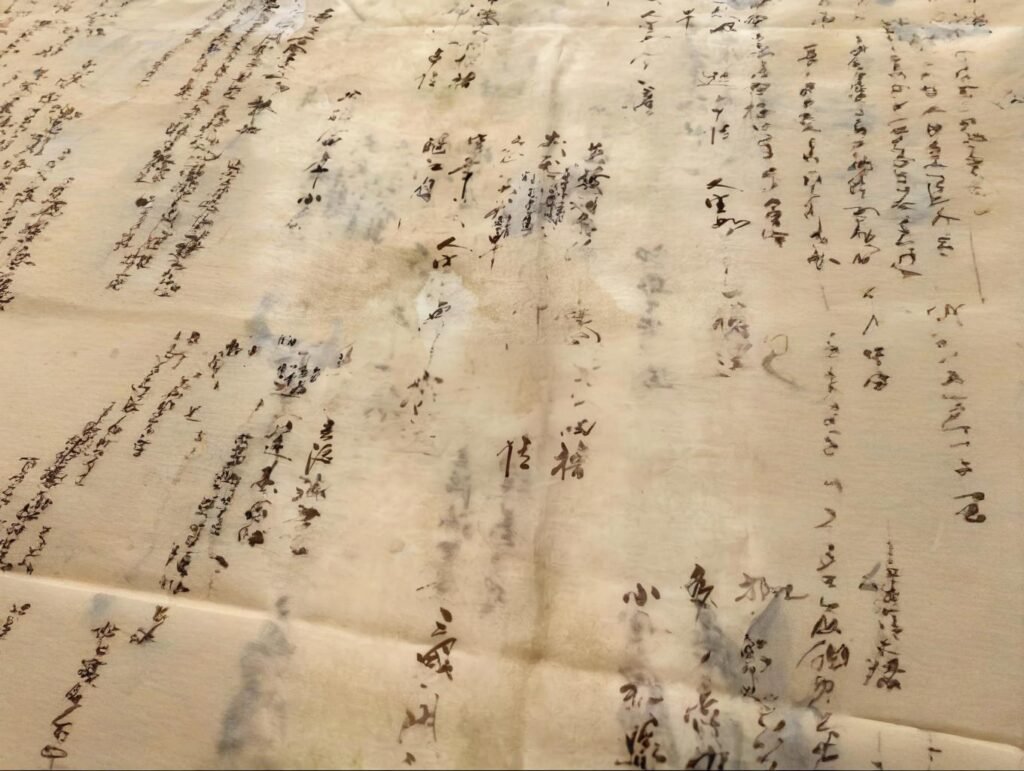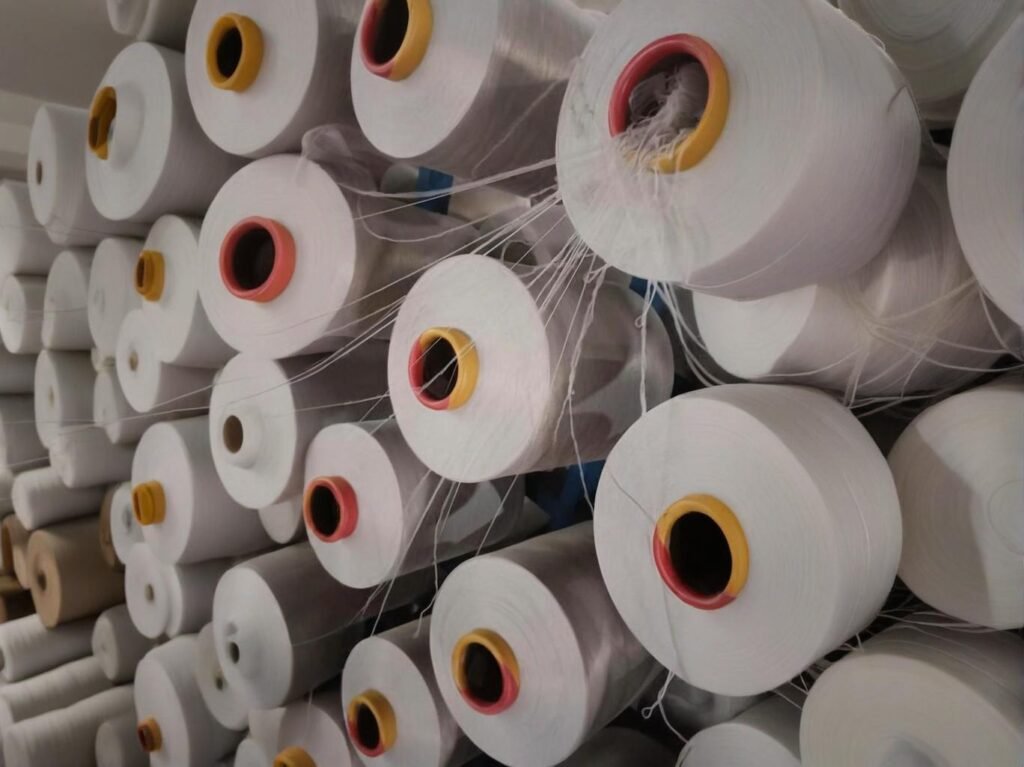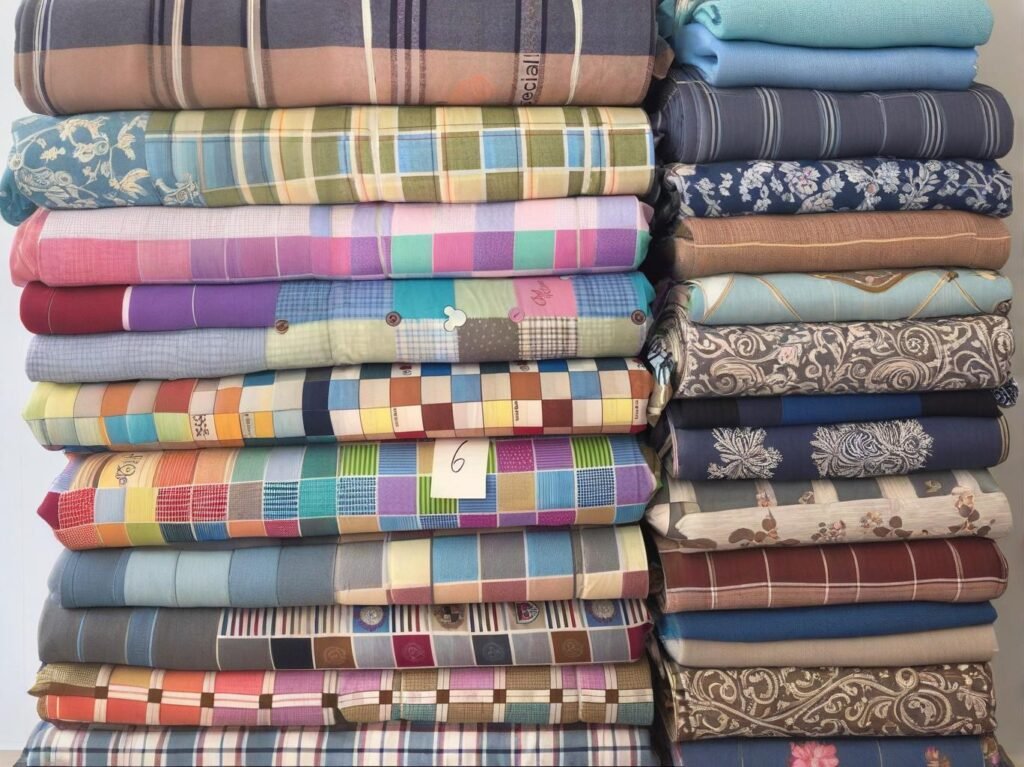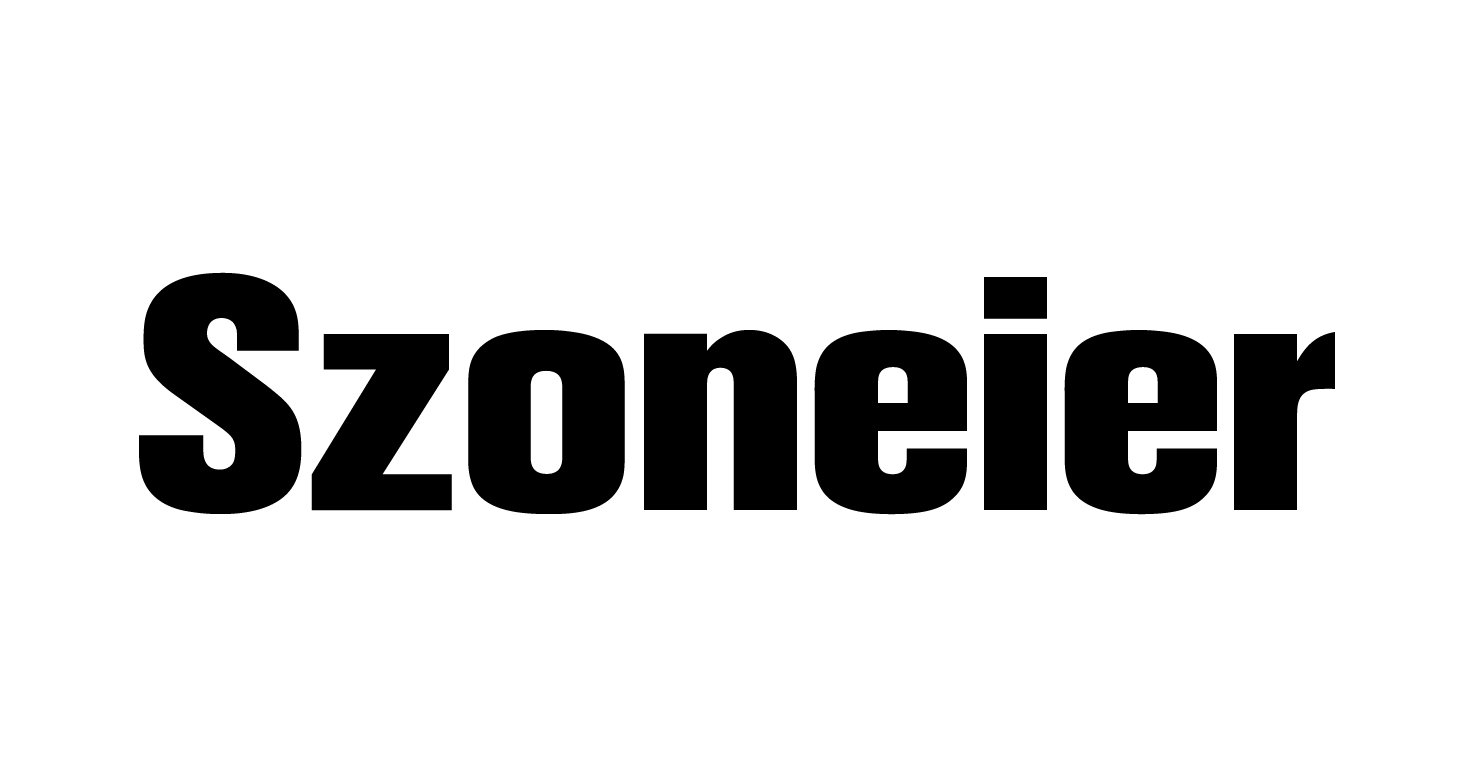In today’s performance-focused apparel market, stretch fabrics are no longer optional—they’re foundational. From yoga pants that contour with every pose to compression leggings that boost blood flow during training, the fabric’s elasticity determines not only how a garment fits, but how it performs. As fashion and function continue to converge in the activewear space, knowing the differences between stretch fabric types—and how they align with specific product goals—has become critical for manufacturers and designers alike.
Stretch fabrics in activewear are engineered to provide elasticity, shape retention, and freedom of movement. The most commonly used types include 2-way and 4-way stretch variations, typically made with synthetic fibers like spandex, nylon, or polyester blends. Each fabric type serves a distinct purpose depending on the garment’s intended use.
But not all stretch fabrics are created equal. One U.S.-based brand launched a line of premium leggings using an ultra-soft cotton-spandex blend. While customers loved the feel, complaints about sagging knees and overstretched waistbands poured in after only a few washes. After switching to a 4-way nylon-spandex interlock knit, the same brand cut their return rate by 42% and tripled repeat purchases on that SKU. Stretch performance isn’t just a feature—it’s a make-or-break detail in modern apparel.
Let’s explore the science, use cases, and sourcing decisions behind stretch fabrics to help you choose the right one for your next activewear collection.
What Are Stretch Fabrics and How Are They Classified in Apparel Manufacturing?

Stretch fabrics are textiles designed to elongate and recover with movement, offering enhanced flexibility and shape retention. They are classified based on fiber content, construction method (woven or knit), and the direction of stretch—either 2-way or 4-way.
Types of Stretch Mechanisms
| Mechanism | Description |
|---|---|
| Mechanical Stretch | Achieved through fabric structure (e.g., knit fabrics that naturally expand) |
| Elastic Stretch | Enabled by elastic fibers like spandex (Lycra), elastane, or rubberized threads |
Construction-Based Classification
| Type of Construction | Stretch Source | Application |
|---|---|---|
| Knit Fabrics | Natural mechanical stretch | T-shirts, leggings, base layers |
| Woven Stretch | Requires elastic fibers | Slim-fit trousers, sports bras, outerwear |
Direction of Stretch
| Type | Stretch Direction | Description |
|---|---|---|
| 2-Way Stretch | Horizontal OR vertical | Moves in one direction, usually width-wise |
| 4-Way Stretch | Horizontal AND vertical | Moves in all directions, provides full range |
Fiber Composition Variants
- Spandex/Elastane: Offers elasticity up to 500–700% stretch and recovery.
- Nylon-Spandex Blends: Smooth, durable, moisture-wicking; ideal for compressionwear.
- Polyester-Spandex Blends: Fast-drying, vibrant color retention; great for printed gymwear.
- Cotton-Spandex Blends: Soft and breathable; more casual but less shape-retentive over time.
Case Insight
At SzoneierFabrics, we worked with an athleisure brand targeting plus-size women. They required a fabric that wouldn’t roll or compress awkwardly. We custom-developed a 4-way warp knit blend (87% nylon / 13% spandex) with high GSM and excellent stretch modulus. The result? A 5-star rating average on the product page and a 1.2% return rate—well below industry standard.
Which Types of Stretch Fabrics Are Commonly Used in Activewear Production?
The most common types of stretch fabrics used in activewear include nylon-spandex, polyester-spandex, cotton-spandex, and power mesh or compression knits. Each is chosen based on specific garment requirements such as movement range, breathability, or sweat resistance.
Top Stretch Fabric Types in Activewear
| Fabric Type | Composition Example | Ideal Use Case |
|---|---|---|
| Nylon-Spandex (Tricot) | 80–90% nylon, 10–20% spandex | Leggings, sports bras, swimwear |
| Polyester-Spandex (Interlock) | 80–95% poly, 5–20% spandex | Printed leggings, tanks, fitted T-shirts |
| Cotton-Spandex Jersey | 90–95% cotton, 5–10% spandex | Light-duty yoga pants, maternity wear |
| Power Mesh | Nylon or poly + elastane | Inserts for breathability in performancewear |
| Compression Knits | Circular/warp knit w/ high elastane | Running tights, base layers |
Key Attributes Comparison
| Feature | Nylon-Spandex | Poly-Spandex | Cotton-Spandex | Compression Knit |
|---|---|---|---|---|
| Moisture Wicking | ★★★★☆ | ★★★★☆ | ★★☆☆☆ | ★★★★☆ |
| Breathability | ★★★★☆ | ★★★☆☆ | ★★★★★ | ★★★☆☆ |
| Shape Retention | ★★★★★ | ★★★★☆ | ★★☆☆☆ | ★★★★★ |
| Print Clarity | ★★★☆☆ | ★★★★★ | ★★★☆☆ | ★★☆☆☆ |
| Skin Comfort | ★★★★☆ | ★★★★☆ | ★★★★★ | ★★★☆☆ |
Material Selection by Market Need
- Performance-driven activewear (e.g., running tights, compression gear): nylon-spandex or compression knits.
- Fashion-oriented athleisure (e.g., yoga sets, lounge leggings): cotton-spandex or printed poly-spandex.
- Functional inserts (e.g., underarms, back panels): power mesh for ventilation.
Case Study: Printed Poly-Spandex for High-End Activewear
An Australian activewear label approached SzoneierFabrics for vibrant, fade-resistant digital prints on leggings. We recommended a 240 GSM 90/10 polyester-spandex interlock, treated with a moisture-wicking finish and double-brushed for softness. The result? Intense color accuracy and consumer reviews highlighting both print quality and comfort.
How Do 2-Way and 4-Way Stretch Fabrics Differ in Performance?

2-way and 4-way stretch fabrics differ primarily in how they move and recover. 2-way stretch fabrics extend in one direction—either horizontally or vertically—while 4-way stretch fabrics move both crosswise and lengthwise, offering full multidirectional flexibility, superior fit, and enhanced mobility.
Functional Comparison Table
| Feature | 2-Way Stretch | 4-Way Stretch |
|---|---|---|
| Stretch Direction | Horizontal OR vertical | Horizontal AND vertical |
| Range of Motion | Limited | Full mobility |
| Recovery After Stretching | Moderate | High |
| Ideal Garment Use | Structured items, waistbands | Leggings, compression wear |
| Comfort During Movement | Adequate | Maximum |
Examples in Activewear Design
- 2-Way Stretch: Often used in waistbands, yoga tops, or jackets where elasticity is needed in just one plane.
- 4-Way Stretch: Preferred for leggings, compression shorts, and training sets to ensure full support and freedom of movement.
Use Case: Performance Running Shorts
A running brand initially used a polyester woven with 2-way stretch for their lightweight shorts. While functional, users complained of resistance during high-knee lifts. After upgrading to a 4-way mechanical stretch warp knit with 15% elastane, user satisfaction improved—particularly among trail runners and athletes with larger builds.
Movement-Specific Benefits
- Yoga & Pilates: 4-way stretch supports dynamic bending and twisting.
- Cycling & Running: Prevents restriction at joints or chafing from repeated motion.
- Dance & Gymnastics: Ensures garments return to form even after extreme extension.
Critical Thinking: Is 4-Way Always Better?
While 4-way stretch offers superior flexibility, it can also result in higher production costs and more complex pattern alignment during garment construction. For items like jackets, outer shells, or structured joggers, 2-way stretch may be sufficient and more cost-effective.
Is Spandex the Only Stretch Fiber Used in Sportswear Manufacturing?
Spandex (also known as elastane or Lycra) is the most commonly used stretch fiber in sportswear, but it is not the only option. Stretch performance can also come from fabric structure (mechanical stretch) or alternative elastic fibers like rubber, T400, and even PBT (polybutylene terephthalate), especially in swimwear and performance knits.
Fiber Comparison Table
| Fiber Type | Stretch Capability | Typical Use Case | Cost Level |
|---|---|---|---|
| Spandex (Elastane) | 500–700% stretch, great recovery | Activewear, shapewear, leggings | $$ |
| T400 | Dual-core polyester elastic yarn | Wrinkle-resistant sportswear, polos | $$ |
| PBT | Soft stretch, chlorine-resistant | Swimwear, base layers | $$$ |
| Rubber | High stretch, poor breathability | Elastic trims, waistbands (less common) | $ |
| Mechanical Stretch (Structure-based) | Moderate (depends on weave) | Jerseys, T-shirts | $ |
Alternative Stretch Technologies
- Mechanical Stretch: Achieved through special weaves/knits (e.g., spacer fabrics, piqué knits) that naturally expand without elastomeric yarns.
- T400 Elastic Yarn (from Lycra): Offers a more eco-friendly, non-spandex alternative that delivers modest stretch with wrinkle and shrink resistance.
Case Insight: Spandex-Free Performance Polo
A golfwear brand wanted to eliminate spandex to improve sustainability and breathability. SzoneierFabrics developed a T400-based polyester pique knit. It provided just enough stretch for a comfortable swing, stayed crisp through repeated wear, and reduced garment weight by 18%.
Why Use Less Spandex?
- Price volatility in spandex supply can affect production costs.
- Heat sensitivity can reduce garment longevity.
- Environmental factors—spandex is petroleum-based and non-biodegradable.
Best Practice
For compression-heavy or next-to-skin apparel, spandex remains essential. But for looser-fit, low-impact, or eco-focused lines, mechanical stretch or engineered polyester fibers offer viable alternatives.
What Are the Key Advantages of Using Stretch Fabric in Activewear?

Stretch fabrics provide activewear with critical performance advantages such as enhanced mobility, shape retention, comfort, and garment longevity. These properties directly impact wearer satisfaction and the functional success of sportswear across categories like yoga, running, gym training, and outdoor activities.
Performance Advantages of Stretch Fabrics
| Benefit | Description |
|---|---|
| Enhanced Mobility | Supports full range of motion without resistance |
| Shape Retention | Maintains garment fit after repeated use and washing |
| Improved Comfort | Reduces friction and supports body movement |
| Compression Support | Aids muscle alignment, reduces vibration, boosts circulation |
| Better Fit Adaptability | Accommodates various body shapes and dynamic postures |
| Wrinkle & Shrink Resistance | Helps preserve garment structure through long-term use |
Mobility in Action
In dynamic sports such as CrossFit or HIIT training, athletes rely on unrestricted movement. Stretch fabrics—especially 4-way—allow garments to move with the body without pulling at seams or creating pressure points.
Compression & Muscle Recovery
Stretch fabrics with graduated compression help improve blood flow and reduce post-exercise fatigue. Brands like 2XU and Under Armour have popularized this feature using high-stretch nylon-spandex blends.
Fit Over Time
One of the biggest consumer complaints in low-quality activewear is “saggy knees” or stretched-out waistbands. High-performance stretch fabrics maintain elasticity even after dozens of washes, ensuring the garment retains its original shape and function.
Case Study: Premium Yoga Sets
A North American brand partnered with SzoneierFabrics to improve their luxury yoga sets. The old fabric, a low-grade cotton-spandex jersey, lost 15% of its elasticity after 10 washes. We replaced it with a double-brushed nylon-spandex tricot (300 GSM). After 50 wear cycles, it retained 94% of its original stretch recovery, significantly reducing returns.
How Do Stretch Fabrics Impact Fit, Durability, and Moisture Management?
Stretch fabrics dramatically enhance garment fit by contouring to the body, improving durability by reducing seam strain, and supporting moisture management through improved fiber technologies and fabric construction.
Fit Impact
| Fit Quality Indicator | Stretch Fabric Role |
|---|---|
| Second-Skin Feel | Enables snug but comfortable fit without restricting movement |
| Size Flexibility | One size can fit a range of body types |
| Recovery Behavior | Bounces back after stretching to avoid loose or baggy fits |
- 4-way stretch garments mold to the body’s curves and recover from movement better than woven or 2-way fabrics.
- Brands using stretch fabrics often see lower return rates due to more forgiving sizing and better wearer satisfaction.
Durability Enhancement
| Durability Factor | Role of Stretch Fabric |
|---|---|
| Abrasion Resistance | Knit structures reduce friction points |
| Seam Stress Distribution | Stretch absorbs tension, reducing blowout risk at critical zones |
| Garment Longevity | Less structural failure under dynamic use |
- High-stretch materials can reduce the stress on seams by up to 30%, especially in high-movement areas like underarms or thighs.
- Stretch fabrics engineered with reinforced yarns or double-knit layers can outlast traditional woven textiles under heavy use.
Moisture Management
| Moisture Management Feature | Function & Fabric Insight |
|---|---|
| Wicking Ability | Pulls sweat away from skin (polyester & nylon perform best) |
| Fast Drying | Reduces drying time post-workout |
| Breathability | Mesh zones and open knit structures aid airflow |
- Polyester-spandex blends with moisture-wicking finishes are widely used in performance tanks and bras.
- Nylon-based stretch fabrics tend to dry faster and have better cooling properties, ideal for hot environments or outdoor sports.
Real-World Example: Trail Running Gear
A European trail-running label requested an upgrade to their mid-layer tops. Their initial cotton-blend design caused overheating and clung to sweat. We transitioned them to a 4-way polyamide-spandex jersey with zoned mesh ventilation. Not only did drying time drop by 35%, but the improved stretch also enabled a more aerodynamic fit—essential for high-endurance performance.
Which Activewear Categories Benefit Most from Stretch Fabric Integration?

Stretch fabrics are essential in nearly every category of activewear where flexibility, support, and movement control are priorities. The degree and direction of stretch vary based on product function—from high-compression performancewear to relaxed-fit athleisure.
Category Overview
| Activewear Category | Recommended Stretch Fabric Type | Why It Works |
|---|---|---|
| Leggings / Tights | 4-way Nylon-Spandex Interlock | Compression, muscle support, unrestricted motion |
| Sports Bras | High-spandex Tricot or Spacer Fabric | Secure hold, shape retention, flexible fit |
| Compression Wear | Circular Knit Compression Fabric | Targeted pressure zones for performance enhancement |
| Yoga Apparel | Cotton-Spandex or Nylon-Spandex Jersey | Comfort + stretch balance, non-see-through |
| Base Layers | Warp Knit Polyester-Spandex with Mesh Zones | Wicking + warmth + close fit |
| Training Tops | Polyester-Spandex with Moisture-Wicking Finish | Fast drying and skin mobility |
| Shorts / Skorts | 2-way or 4-way Polyester Blends | Structure + limited range flexibility |
| Swimwear | PBT-Spandex or Chlorine-Resistant Nylon | Durable in water, good recovery and stretch retention |
Product-to-Stretch Matching Strategy
- Yoga Leggings: Require soft handfeel, medium compression, and high opacity—opt for high GSM nylon-spandex blends.
- High-Impact Sports Bras: Need firmness and resilience—choose double-layer power mesh or spacer knits.
- Men’s Compression Shorts: Require directional stretch and breathability—consider warp-knit polyester-spandex with antimicrobial treatment.
Market-Specific Considerations
- Cold Weather Gear: Use brushed back stretch knits for warmth and elasticity (e.g., fleece-lined polyamide blends).
- Summer Fitness Lines: Favor ultralight polyester-spandex interlocks with open-cell knits or laser-perforated zones.
- Plus-Size Activewear: Requires greater modulus and recovery stretch to prevent rolling, bunching, or see-through effects.
Brand Case Study: Multi-Line Athleisure
A Canadian brand with yoga, cycling, and casual lines worked with SzoneierFabrics to develop stretch-optimized SKUs across product categories. By adjusting GSM, stretch direction, and fiber ratios for each category, they reduced inventory mismatch and improved first-fit satisfaction across sizes by 40%.
How Can Manufacturers Choose the Right Stretch Fabric for Their Product Line?
To select the right stretch fabric, manufacturers must consider product function, target consumer, climate of use, required certifications, and brand positioning. A strategic balance of comfort, compression, recovery, and cost determines the success of a stretch-based garment.
Decision-Making Framework
| Factor | Questions to Ask | Recommended Fabric Direction |
|---|---|---|
| Product Use | Is it for yoga, running, training, lounging? | 4-way or compression stretch as needed |
| Fit Requirement | Should it be form-fitting, loose, or semi-fitted? | Choose modulus and spandex % accordingly |
| Target Market | Is the customer comfort-driven or performance-focused? | Cotton blends vs Nylon/Poly blends |
| Printing Needs | Will it be digitally printed or sublimated? | Poly-spandex performs best |
| Climate of Use | Hot, humid, cold, or indoor environments? | Moisture-wicking vs brushed fabrics |
| Budget Constraints | Are cost savings a priority? | Poly blends are more affordable |
| Sustainability Goals | Is there a need for recycled or certified fabrics? | Use rPET or OEKO-TEX/GRS fabrics |
Recommended Fabric Properties by Goal
| Design Priority | Fabric Specs to Look For |
|---|---|
| Maximum Support | High GSM, high spandex %, firm interlock structure |
| Lightweight Feel | 180–220 GSM, 10–15% spandex, fine-gauge knit |
| Printability | Polyester-spandex blends, white base, smooth finish |
| Softness | Double-brushed or cotton-rich blends |
| Eco Credentials | rPET + elastane, GRS or OEKO-TEX certified |
SzoneierFabrics Recommendation Approach
At SzoneierFabrics, we help clients determine optimal stretch materials by:
- Providing comparative swatches across fiber mixes and stretch percentages.
- Running lab tests for recovery, pilling, shrinkage, and moisture wicking.
- Offering custom GSM weaving and knitting services tailored to performance needs.
Real-World Result
A European brand launching its first modest activewear collection needed a stretch fabric that provided coverage, cooling, and recovery without clinging. Our solution: a custom warp-knit polyamide/spandex blend (280 GSM) with a matte finish and quick-dry coating. It outperformed in both sales and comfort feedback, especially among consumers in Gulf countries.
Choose Stretch Strategically, Manufacture with Confidence
Stretch fabrics have transformed activewear from function to fashion and back again. Choosing the right stretch type—from basic cotton-spandex blends to engineered compression knits—can dramatically improve garment fit, performance, and customer loyalty. It’s not just about elasticity—it’s about engineering movement into every thread.
At SzoneierFabrics, we support your fabric selection with expert guidance, free samples, low-MOQ development, and advanced knitting technologies. Whether you’re launching leggings, base layers, or sport bras, we help you create performance-driven products that move with your customers—literally.
Request a custom stretch fabric quote or sample set today.

